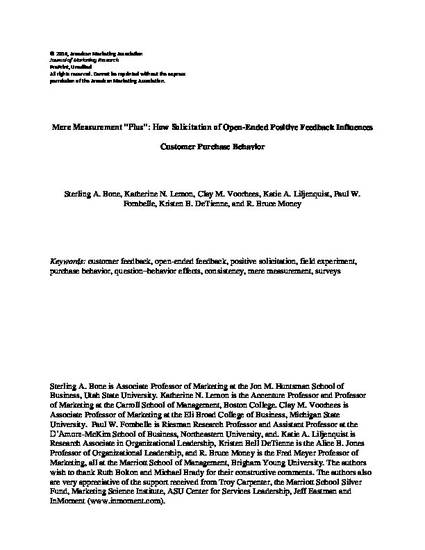
In two studies (a longitudinal field experiment with an established B2C national chain, and a field experiment with a B2B software manufacturer), we demonstrate that starting a survey with an open-ended positive solicitation increases customer purchase behavior. Study 1, a longitudinal field experiment, showed that one-year following the completion of a survey that began by asking customers what went well during their purchase experience, customers spent 8.25% more than customers who completed a survey that did not include the positive solicitation. In Study 2, we utilized multiple treatment groups to assess the step-wise gains of solicitation, measurement, and solicitation frame. The results demonstrated (a) a mere solicitation effect, (b) a traditional mere measurement effect, and (c) an additional “mere measurement plus” effect of an open-ended positive solicitation; all effects increased customer spending. Specifically, starting a survey with an open-ended positive solicitation resulted in a 32.88% increase in customer spending relative to a survey with no open-ended positive solicitation. The findings suggest that firms can proactively influence the feedback process. Soliciting open-ended positive feedback can create positively biased memories of an experience; the subsequent expression of those memories in an open-ended feedback format further reinforces them, making them more salient and accessible in guiding future purchase behavior.
